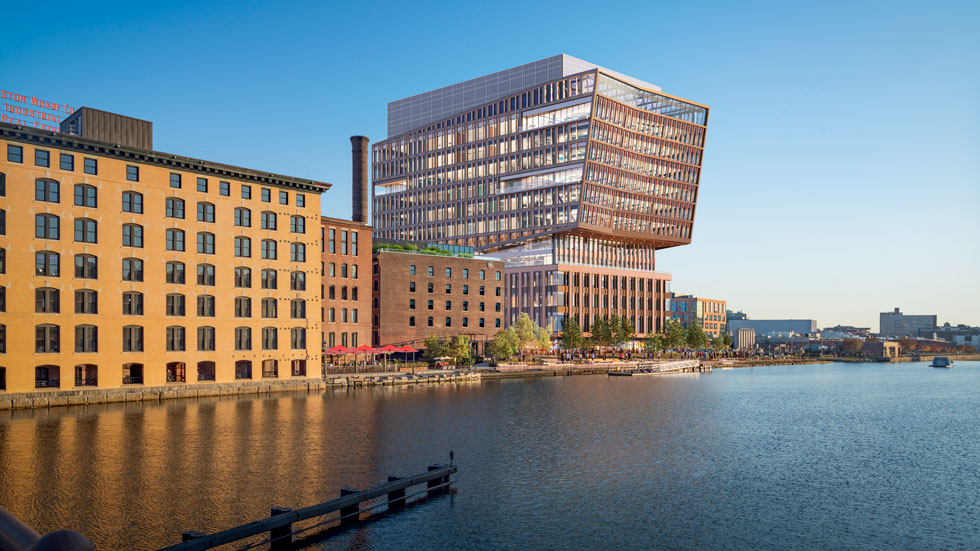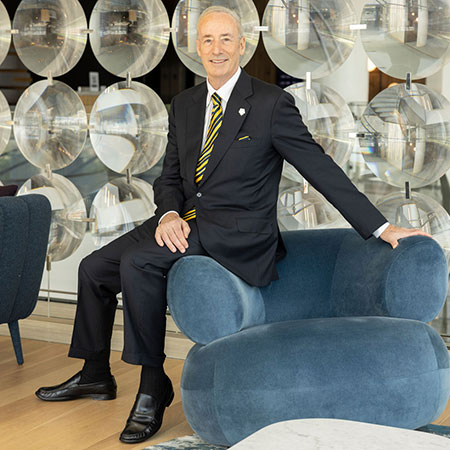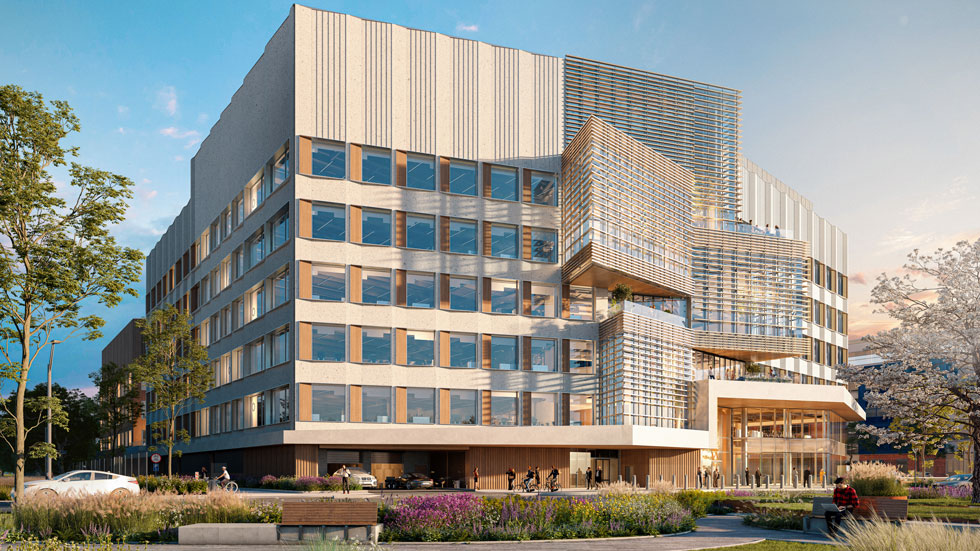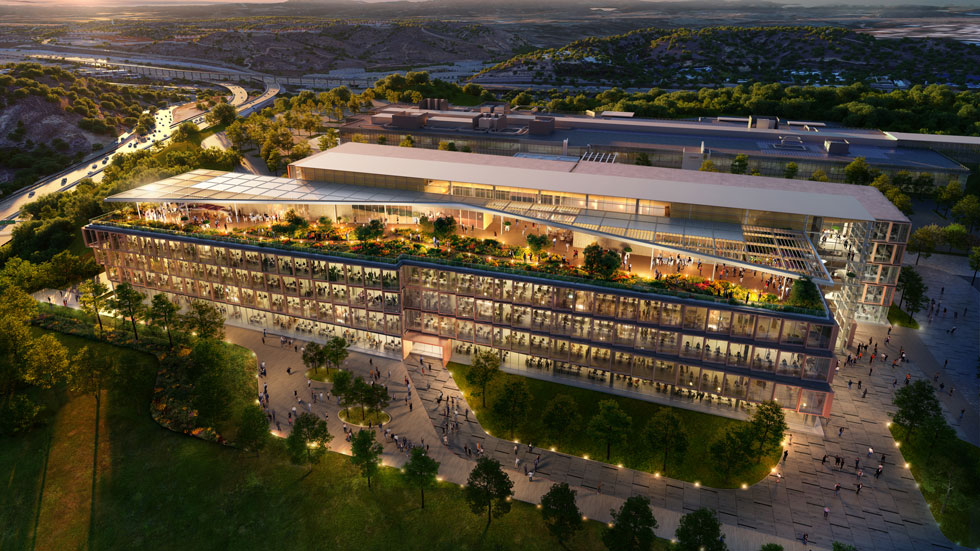Alexandria Real Estate Equities, Inc. pioneered the life science real estate niche and continues to break new ground in the sector.
A quarter century after it began life as a garage start-up, Alexandria Real Estate Equities, Inc.’s (NYSE: ARE) decision to focus on the niche segment of life science real estate looks sounder than ever as demand for sophisticated lab space across major U.S. markets sits at an all-time high.
Pasadena, California-based Alexandria is the only publicly traded, pure-play office/laboratory REIT. The company, led by founder and Executive Chairman Joel Marcus, focuses exclusively on highly specialized lab space used for research and development in the booming life science industry.
The REIT owns, operates, develops, and acquires Class A buildings in urban cluster campuses in key markets and offers tenants top-of-the-line amenities and the highest-quality, sustainable building materials. The S&P 500 investment-grade rated REIT boasts an asset base of approximately 74 million square feet.
Alexandria’s already-strong performance was amplified by the pandemic when demand surged from new and existing tenants across its portfolio, as billions of dollars flooded into the research and development of a COVID-19 vaccine and other therapies to combat the virus. The company outperformed its expectations for 2021 and is reporting a robust 2022.
“There’s a ton of demand for life science real estate,” says Daniel Ismail, lead analyst for Green Street’s office team. “The pandemic helped supercharge a demand story that existed pre-COVID.” It also highlighted the resiliency in terms of the essentialness of the underlying real estate, he says. “Many traditional offices during the pandemic were completely empty. Even now, many office buildings in the country are 30% to 40% occupied. For Alexandria, these buildings stayed open and operational because it’s very difficult to do lab work from home.”
Record-breaking Activity
Serving growing pharmaceutical and biotech companies, Alexandria reported its highest-ever annual leasing volume in 2021 with 9.5 million square feet. The company leased 4.1 million square feet during the fourth quarter alone. That annual leasing activity is projected to generate more than $6 billion of contractual triple-net base rents. In the first quarter of 2022, the company leased another 2.5 million square feet.
Since life science demand exploded, new developers and property owners want a piece of the action. However, Alexandria has an immense advantage with its long-term relationships with large, industry-leading companies, many of which are revolutionizing the biotech sector. Alexandria boasts more than 1,000 tenants including Moderna, Bristol-Myers Squibb, Sanofi, Illumina, and Takeda.
Alexandria’s accomplishments haven’t gone unnoticed. “They’re a giant in a very small industry, which has been really unique for them, and it’s been a great attraction for investors,” says David Rodgers, Baird & Co. Inc.’s senior analyst covering office real estate. “They were the first to focus on life science real estate and really dedicate the bulk of their business to it. As a public company, staying true to that focus of clustering assets around key life science geographies has really paid off over the long term.”
Origins
In 1993, the partners at Jacobs Engineering Group asked Marcus, a certified public accountant and biotech industry attorney, to create a business plan to launch a private REIT that would exclusively own and invest in life science real estate, essentially, creating a brand-new asset class. They asked Marcus, then 47, to lead the company.
Alexandria began as a garage startup in 1994 when biotech was still an emerging industry. Marcus co-founded it with $19 million in Series A capital. Concentrating on the fast-growing biotech market in San Diego, Alexandria acquired four buildings. The new company proved that biotech companies were underserved, and that there was strong market demand.
Alexandria raised about $100 million in capital, which led to its IPO in May 1997, becoming the first REIT focused on lab space. It raised an additional $155 million on the public market. “We were the first group that identified life science real estate as a niche, which could both garner and deploy capital to an important industry, which really had no major infrastructure capital going into it in the early 1990s,” Marcus says.
“When I rang the opening bell at the IPO, I was interviewed and someone asked, ‘How big could this company be?’” Marcus recalls. “I said, ‘Well, in 10 or 15 years, maybe we could be a $1 billion company.’ And lo and behold, we passed $44 billion in enterprise value at the end of 2021.”
In May, the company celebrated the 25th anniversary of its IPO. Life science, meanwhile, has moved from being a niche segment to mainstream real estate. “Many institutions want exposure, especially pension funds, life insurance companies, traditional investors, and even private equity,” Marcus says. “It really has transformed in a way that I could never have quite imagined, and that’s coincided with the boom in the biotechnology industry.”
Forming Clusters
Launching the niche was the first step. Marcus recognized that companies utilizing labs often cluster, so Alexandria pursued locations where clusters were likely to develop, including urban areas near major universities.
Marcus followed Harvard Business Professor Michael Porter’s theory of “cluster development” and began operating under an urban cluster model, where a world-class location, technology and innovation, a talent pool of scientists and professional managers, and ample risk capital all merged.
Marcus says those four components are necessary for life science companies to flourish. He pivoted from developing and acquiring single assets to focusing on highly-amenitized urban cluster campuses in seven key markets: Greater Boston, San Francisco, New York City, San Diego, Seattle, Maryland, and Research Triangle Park near Raleigh, North Carolina.
“There’s a competitive need for biotech companies to be in many of these major markets,” Ismail says. “For Alexandria to own big concentrations of campuses where they can provide the amenity base, as well as the opportunity to expand and move into different facilities and have them run incredibly professionally by one of the most experienced teams in the industry, is a real competitive advantage for Alexandria’s tenants.”
Marcus says top life science clusters and the upgraded amenities that Alexandria’s buildings offer are a significant advantage for companies in their ability to recruit and retain top talent in a very competitive environment. “Our industry is very collaborative, and campuses become very important places for people to go,” he notes.
Raised Guidance
Occupancy across Alexandria’s portfolio was 94.7% in the first quarter while rent growth was 32.2%. Alexandria projects further rental growth of 30% to 35% for full-year 2022. Its first quarter revenue rose 28.2%, from the year earlier, to $615.1 million.
Driven by a voracious appetite for space, Alexandria raised the outlook for funds from operations (FFO) per share growth to 8% for the year. “We beat guidance and we raised guidance. I think that gives a sense of how we’re viewing this year,” Marcus says.
Alexandria’s pipeline includes 8 million square feet under construction or scheduled to begin construction in the next six quarters, which is projected to generate $665 million in new annual rental revenue.
“Nearly 80% of that space is pre-leased or under negotiation,” Marcus says. “That’s an extraordinary number of commitments ahead of delivering the space. We’re building in Seattle, San Francisco, San Diego, Boston, Maryland, and North Carolina. Each of the markets is seeing strong demand. Over 80% of that demand comes from our existing 1,000 tenants. We’ve got a built-in demand driver by our own clients, which is very unusual.”
For example, Alexandria signed a massive, 462,000-square-foot lease with vaccine-maker Moderna at its Alexandria Center at One Kendall Square mega campus in Cambridge, Massachusetts. The under-construction Moderna Science Center, at 325 Binney Street, will house the mRNA pioneer’s headquarters and research and development operations.
Alexandria is designing it to be the most sustainable commercial lab building in Cambridge. Plans call for a net-zero commercial lab, relying on geothermal energy and on- and off-site renewable power. Alexandria is targeting LEED Zero Energy and Fitwel certifications. “It will be ultra-efficient, minimizing its carbon footprint and harnessing geothermal energy and renewable electricity, which is really a game-changer,” Marcus says.
For decades, Alexandria has been a leader in building sustainable campuses. Its goal is to develop and operate efficient and healthy buildings by reducing carbon emissions and mitigating climate risk. The company had one of the world’s first office/lab projects certified in the U.S. Green Building Council LEED Core and Shell pilot program, and now has over 80 projects that achieved or are pursuing LEED certification.
Additionally, Alexandria earned the first-ever Fitwel Life Science certification for its leadership in prioritizing tenant health and wellness and was named a 2021 Global Real Estate Sustainability Benchmark (GRESB) Global Sector Leader.
In the first quarter, Alexandria inked a 427,000-square-foot lease with Bristol Myers Squibb, its largest tenant, (by annual rental revenue) for the development of that company’s newest, cutting-edge research hub focused on cancer as well as immune-mediated and neurodegenerative diseases at the Alexandria Point mega campus in San Diego.
The REIT also signed a 334,00-square-foot lease with Eli Lilly and Co. for the development of Lilly’s new state-of-the-art Institute for Genetic Medicine at 15 Necco Street in the REIT’s Seaport Innovation District submarket of Greater Boston.
Both facilities will provide many amenities and be highly sustainable, high-performance buildings. “Each of these tenant relationships started literally decades ago,” Marcus says. “We have developed very broad and deep multi-cluster and multi-market relationships with most of the top companies in our industry.”
Next Emerging Market
Many cities want to become the next emerging life science market, but obstacles exist. Marcus says it takes roughly 25 years for a cluster to mature.
“It’s difficult for other clusters to become mainstream and grow, because it’s hard to attract the four key elements: location, innovation, talent, and capital,” he explains. “Any number of cities would like to get there but probably don’t currently have those characteristics: Chicago, Denver, Phoenix. You can name a dozen cities.”
That being said, Alexandria is eyeing Texas as the next emerging market, where the REIT is in the “process of a series of transactions,” although Marcus says he cannot comment further.
In Alexandria’s fourth-quarter 2021 earnings call, Marcus said, “Literally, [there’s] no real presence of commercial life science [in Texas] today, but our intent is to create a market and really bring early-stage commercial life science to Texas, much like we did in New York.”
In addition to exploring potential new geographic markets, Alexandria is also staying on top of innovations in the life science industry through Alexandria Venture Investments, a venture capital platform Marcus created in 1996 that invests directly in the companies it serves. It invests in disruptive life science, agri-food tech, climate innovation, and technology companies.
Ismail says the platform gives Alexandria a competitive edge. “They’re incredibly active on the venture capital side of the business,” he explains. “They own a billion-dollar venture capital portfolio and have invested in startups and established technology companies.”
This is relatively unique to Alexandria within the public REIT world, he says. It allows them to be enmeshed in the life science business, not only as a landlord, but as a company that’s actively investing in the business, trying to understand the science, understand the tenants, staying abreast of trends. “It’s undoubtedly a differentiator that has borne fruit.”
Addressing Future Challenges
While the outlook for Alexandria certainly looks solid, one thing that people are watching is the health and liquidity of the underlying biotech industry, Rodgers notes.
“Additionally, high-level interest rates always have an impact on real estate, but that’s where Alexandria’s strong balance sheet comes in,” Rodgers continues. The company’s balance sheet has $5.7 billion of liquidity as of March 31, 2022.
“When the world is in a tumultuous situation of global conflict, economic stress, and rising interest rates, those are a series of things that investors worry about,” Rodgers says. “However, from Alexandria’s standpoint, they should be able to continue to fund their growth. They’re certainly not overcommitted in any way, and they have several great projects going forward.
Ismail agrees: “There’s some concern with biotech stocks, but overall, that’s more of a potential change in the rate of growth rather than something that appears likely to upset or end the party.”
Meanwhile, both labor and material costs have increased, Marcus says, “but the biggest wildcard has been the supply chains throughout the world. China of course, but many other locations.” And then there are transportation and increased energy costs as well.
“About 80% of our projects are under fixed-rate contracts, and we’re in the process of finalizing fixed-rate contracts for the remaining 20%, so we’re insulated as best you can,” he continues. “But new construction and development will be more expensive, and certainly, entitlements around the country are getting tougher to obtain.”
However, Marcus says existing assets will become more valuable as a result. “We’ve done a really good job on our construction/development side in making the most of the demand,” he adds.
Making an Impact
Since its founding, Alexandria has been committed to making a positiveimpact on the health, safety, and well-being of its tenants, stockhold-ers, employees, and communities. The company is addressing some
of society’s most pressing issues including harnessing the agri-food ecosystem to combat hunger, addressing the mental health crisis, and accelerating groundbreaking medical research.
One of Alexandria’s largest efforts is OneFifteen, a data-driven opioid treatment and recovery campus in Dayton, Ohio, created in partnership with Verily, the life science arm of Google-parent company Alphabet. Inspired by the OneFifteen platform, Alexandria is developing a new model in Seattle to combat the home- lessness crisis. Alexandria hopes OneFifteen will encourage similar projects around the country.



